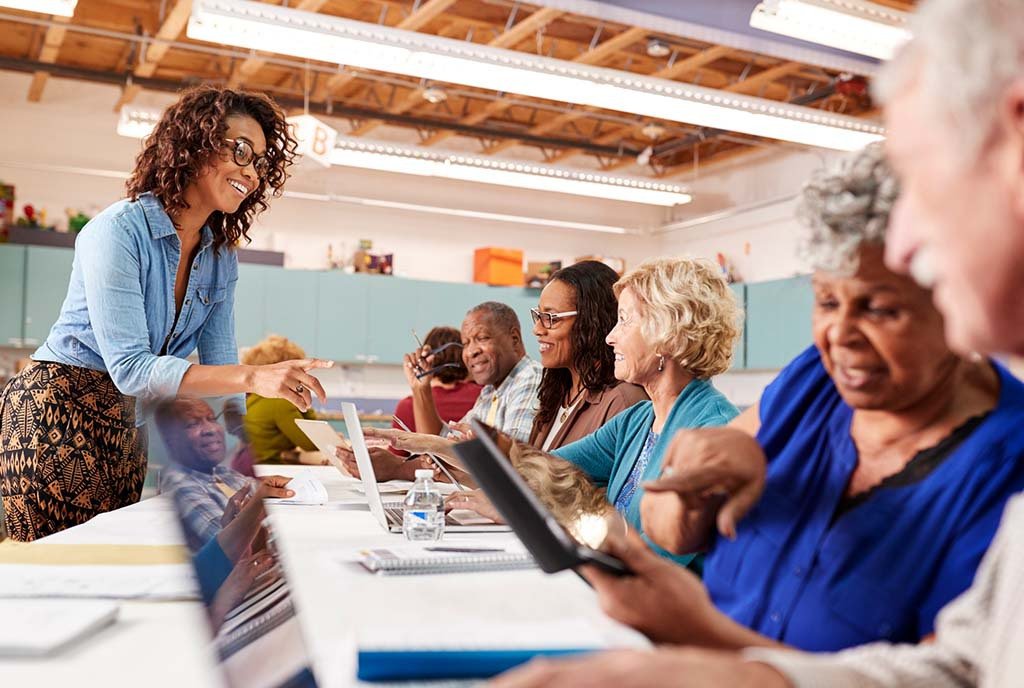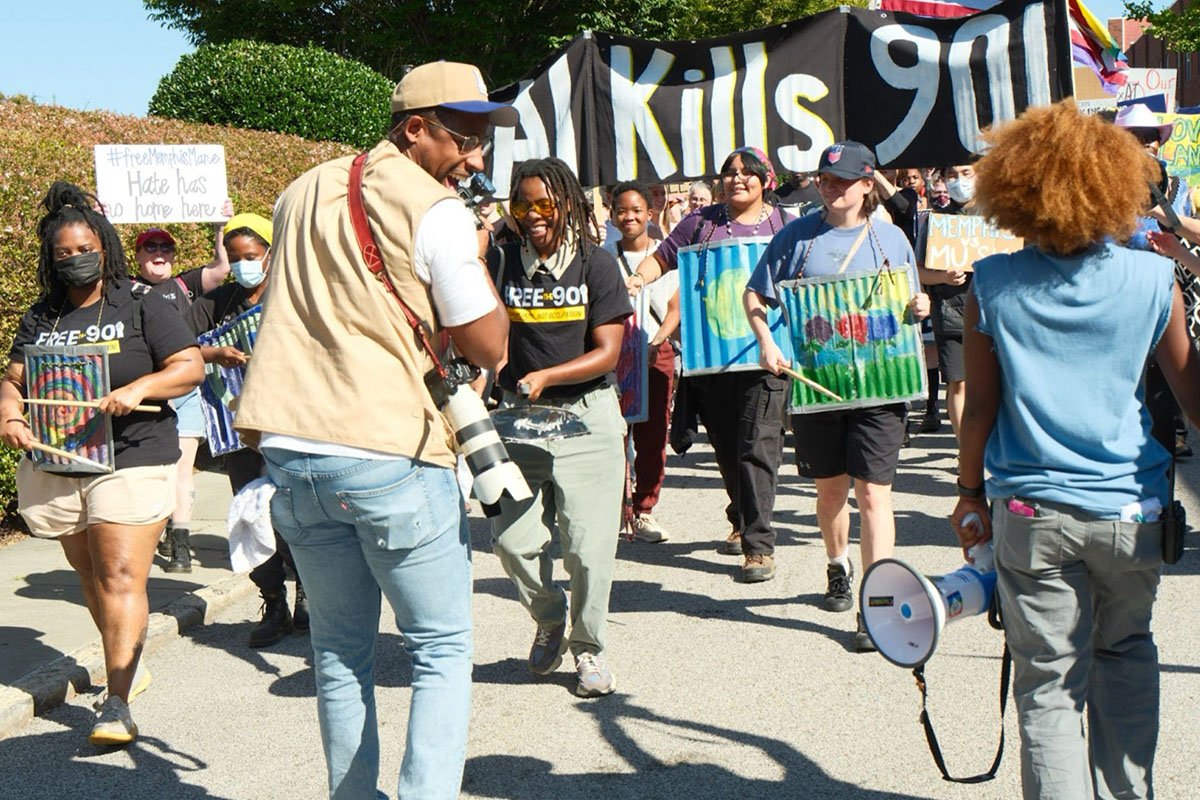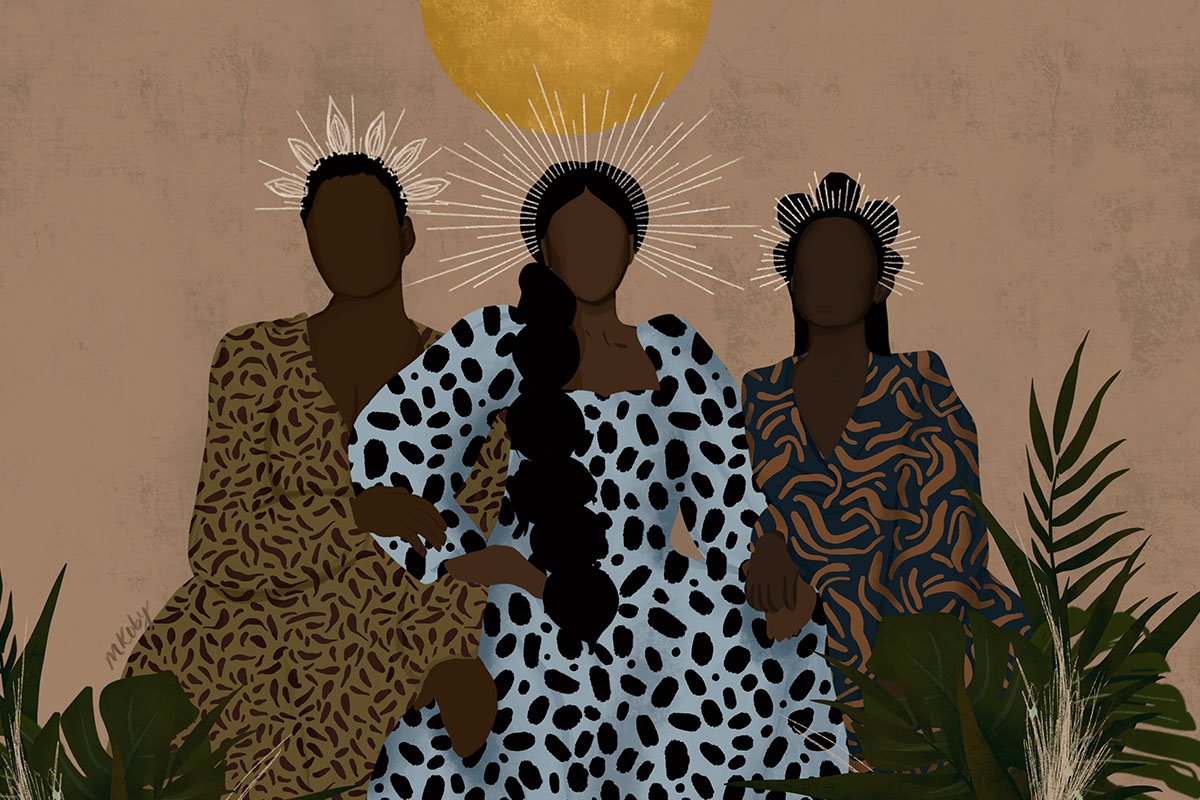
In June 2023, the Biden administration announced that the government would invest $42.45 billion in funding to connect every citizen in the country to high-speed internet. The funding, available as part of the Infrastructure Investment and Jobs Act (IIJA), allows the opportunity for every state and US territory to invest in high-speed broadband infrastructure through the Broadband Equity, Access, and Deployment Program (BEAD). This historic and critical investment will make substantial advances, particularly in unserved and underserved communities, in closing the digital equity divide.
Among those underserved populations, older adults stand out as one of the largest demographics without access to the internet. While one in four adults in the United States does not have available broadband in their homes, research by the Humana Foundation and Older Adults Technology Services (OATS) from AARP shows that 42 percent of seniors—about 22 million people ages 65 and older—have no home-based internet. Of those with internet, many deal with unstable or slow connections that make it impossible to use dependably. Notably, the divide is most significant among low-income and Black and Latinx seniors, who are far more likely to be offline than the general population.
The physical isolation imposed during the height of the pandemic brought new attention to the risks of social isolation and loneliness that had reached epidemic proportions long before the pandemic.
Connectivity is a crucial first step toward digital equity, but to make internet access useful, digital literacy training will be critical for the populations deprived of regularly engaging online. To that end, the Digital Equity Act (DEA), also part of the IIJA, funds community-centric programs that provide digital skills training and readiness for underserved populations. Both state entities and community groups can apply for and receive funding for digital inclusion initiatives under the DEA for the next five years. As plans are developed, it’s critical for older adults and the nonprofits and philanthropies representing underserved seniors to have a seat at that table.
Health and Connectedness
The COVID-19 pandemic exposed the severity and danger of the nation’s digital divide. Not having access—or not having proper digital literacy and skills—was potentially life-threatening. In addition to serving as a lifeline for accessing healthcare and government services, managing finances, ordering groceries, and other essential tasks, the internet has also become the primary means for social engagement.
The physical isolation imposed during the height of the pandemic brought new attention to the risks of social isolation and loneliness that had reached epidemic proportions long before the pandemic. Older adults have been particularly impacted, with one in four feeling socially isolated and more than four in 10 feeling lonely. According to the CDC, both pose a serious public health risk. Social isolation significantly increases the chance of premature death and is associated with a 50 percent increased risk of dementia, while loneliness causes higher rates of depression, anxiety, and suicide. In fact, the impact of being socially disconnected on mortality is similar to that of smoking up to 15 cigarettes a day.
To close the digital divide, we need to give seniors the skills and confidence to use the internet effectively.
As COVID made clear, engaging online is important for combatting social isolation and loneliness. Research shows that as seniors’ frequency of online activity increases, so do their feelings of connectedness, alleviating their sense of isolation. Increased use of social technology is also a predictor of lower rates of loneliness and better physical and mental health. Internet access is, therefore, not just a digital equity issue but also a health equity imperative.
The Case for Digital Literacy Training
Investing in broadband infrastructure to ensure underserved communities have access is an essential first step to connecting those who’ve gone without. But it’s only the beginning of what is needed for meaningful adoption and utilization of high-speed internet services, especially for improving older adults’ social engagement and health.
To close the digital divide, we need to give seniors the skills and confidence to use the internet effectively. A multiyear partnership between OATS and the Humana Foundation to develop evidence-based digital literacy training and support models for older adults has shown the impact these programs can have on better connection, health, and wellbeing.
Sign up for our free newsletters
Subscribe to NPQ's newsletters to have our top stories delivered directly to your inbox.
By signing up, you agree to our privacy policy and terms of use, and to receive messages from NPQ and our partners.
During the height of the pandemic, a public-private partnership was formed to bring internet connectivity, devices, training, and support to 10,000 low-income seniors living in New York City Housing Authority (NYCHA) apartments, with OATS providing the training and hotline support through its flagship program Senior Planet from AARP.
The training was age-specific, extensive, and provided by a qualified trainer. Participants met twice a week in Zoom classes for five weeks on topics such as online navigation, Gmail basics, internet safety, and managing device settings. New skills were linked to real-life applications in social engagement, health, financial security, and other areas important to older learners.
A follow-up study undertaken by OATS with assistance from Cornell University researcher Erin York Cornwell and published in the report, Fly Like an Eagle: Measuring Transformational Social Outcomes Among Seniors Using Technology, found:
- Individuals participating in this online training program reported making new social contacts via an online platform at twice the rate of those who hadn’t participated
- Sixty percent reported participating in a new social event or group, more than double the nontrained group
- Those receiving training were about half as likely to experience worsening depressive symptoms, and more than half of trained participants felt less frequent feelings of loneliness following the program, a 20 percent higher rate than the control group
While significant initiatives like the NYCHA program involved thousands of older adults, digital literacy programs for seniors were happening at smaller scales throughout the United States during the pandemic. Many of these initiatives were made possible by funding from foundations that have created locally grown models and advanced our experience and evidence on best practices.
One such program was developed in North Conway, NH, where a $10,000 rapid-response grant from the Tufts Health Plan Foundation enabled the Gibson Center for Senior Services and its public library to continue to serve older adults isolated by pandemic shutdowns. Devices were provided along with training in basic digital skills with a focus on social connections. That program’s success spread to neighboring towns and led to a $15,000 National Institutes of Health (NIH) grant for the All of Us Community Award for Health Programming to promote the use of telehealth. The grant was used to create a four-part series on telehealth-related topics, buy 30 Chromebook laptops, and provide privacy booths in the library and Gibson Center for telehealth visits.
For older adults at higher risk for isolation and loneliness, providing connectivity and the digital skills needed to access social interactions, information, services, and activities is vital to their independence and wellbeing.
Propelling Digital Literacy Forward
As DEA plans are drawn up and funding dispersed, nonprofits and philanthropies can play a role in developing effective and sustainable digital literacy programs. In our experience, there are several key elements to successful programs:
- They’re culturally competent—this is where community-based involvement is critical
- They address the physical and cognitive challenges older adults may face in learning digital skills
- They meet seniors where they are both in their skill levels and in the places where they naturally spend time, such as senior centers, libraries, and houses of worship, as well as provide ongoing support
- The program’s effectiveness is systematically measured and revised based on outcomes
The experiences and expertise philanthropic organizations gained during the pandemic in all-remote settings will be invaluable in helping states be innovative and best utilize existing resources. Though it was a time more difficult to adapt to than others, it promoted accessibility for all rather than some. Now, as we move forward, we must continue to uphold that accessibility—and philanthropic funds can extend the reach of funded programs and continue that good work into the future, as federal funds expire after five years.
Nonprofits and philanthropic organizations working to close the digital divide should seize this historic opportunity to overcome barriers that have kept underserved seniors offline. As more of daily life occurs online, no matter how fast and reliable broadband service is, those without the digital literacy, skills, and confidence to use it in meaningful ways will be unable to engage with the world around them. For older adults at higher risk for isolation and loneliness, providing connectivity and the digital skills needed to access social interactions, information, services, and activities is vital to their independence and wellbeing.











